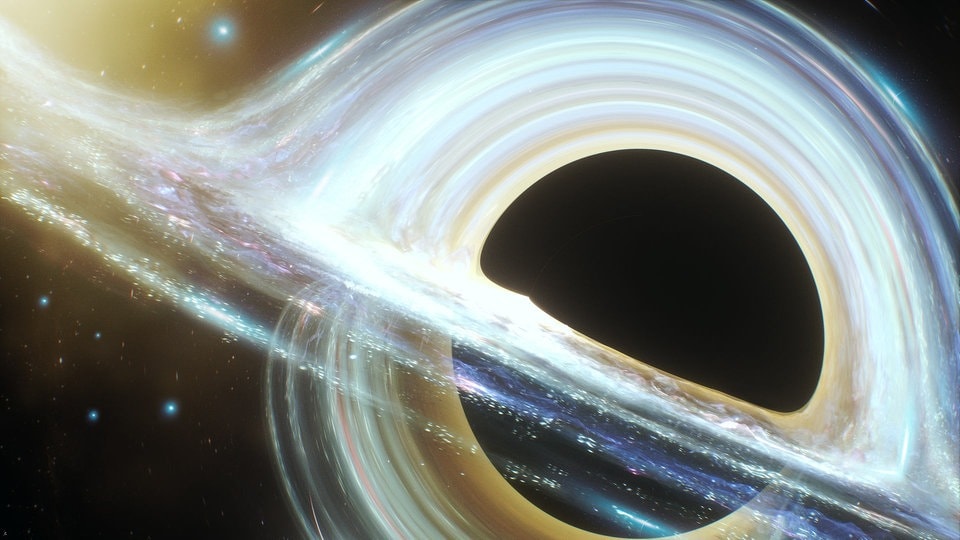Albert Einstein described the existence of black holes mathematically, but he considered his calculations incorrect. The idea that there could be places in the universe where gravity is so strong that neither particles nor radiation such as light could ever escape seemed incredible to him. But Einstein was wrong. Many researchers after him have shown that black holes do exist. Recently, astronomers, using radio telescopes, were able to take pictures of the outlines of the center The black hole in our Milky Way galaxy close. Dresden researchers have now developed a theoretical concept of how to examine some of the properties of these enigmatic objects in the laboratory.
Whatever passes through the event horizon stays trapped in the black hole forever
Black holes are accumulations of massive masses into a tiny point. This results in an enormous gravitational pull, because matter attracts other matter, according to the popular description of gravity (often called gravity). Indeed, according to Einstein’s theory of relativity, which has been proven many times, matter does not attract other matter. Instead, the block deforms the surrounding space and thus ensures that the other block falls against the block. The black hole’s massive concentration of mass, in turn, warps the surrounding space into a kind of deep funnel where everything that crosses the so-called event horizon is trapped.
Think of the event horizon as the edge of a waterfall. The closer the water is to the edge, the faster it will flow. If the fish gets too close to the edge, it can no longer swim fast enough and is pulled down. So the event horizon is the boundary beyond which something must inevitably fall into the hole and no longer escape from it. However, the phenomenon of quantum physics, that is, the physics of the smallest particles in the universe, must lead to a strange effect at this point, which is called Hawking radiation.
Dresden physicists want to simulate the effects of Hawking radiation in the laboratory
In the world of quanta, there are many phenomena as unbelievable as black holes. Thus, pairs of so-called quanta entangled with each other constantly appear everywhere in the universe. Usually both parts immediately fall back together, cancel each other out and thus disappear again. However, at the edge of a black hole, this part of the quantum pair could fall beyond the event horizon, and therefore would have to fall into the hole. In this case, the other part of the pair would be radiated from the hole in the form of a small amount of heat, according to the idea of \u200b\u200bthe physicist Stephen Hawking.
Here we explain what quantum entanglement means and how it is used to encode communication Described based on research from Jena And here at Practical tests in Dresden.
But in fact, this radiation has never been measured. The nearest black hole in space is very far away, and the radiation would be too small to be detected by a measuring instrument from Earth. But now physicists in Dresden have developed an idea of how to simulate the effects Hawking predicted in the lab. If this idea can be tested in practice with an experiment, it could be a way to fill the gap that exists so far between Einstein’s general theory of relativity and quantum physics.

“Social media evangelist. Baconaholic. Devoted reader. Twitter scholar. Avid coffee trailblazer.”







More Stories
HarmonyOS 4.2 – SHOCK2 update is available
Thunderbird 125 released? No, the websites spread fake news
Dropbox deepens integration with Microsoft 365 with live collaboration on Office documents › Dr. Windows